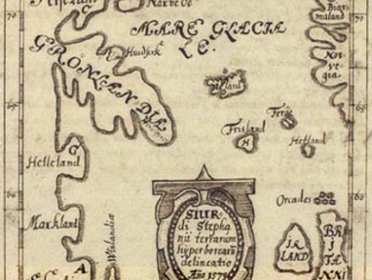Norse Discovery of America

Table of Contents
- Evidence of Norse Discovery of America before Christopher Columbus
- Saga of the Greenlanders
- Leif Erickson's Expedition to North America and Location of Vinland
- Theories About the Meaning of Vinland
- Norse Settlement in North America
Quick Facts
The Norse discovered America around year 1000, nearly 500 years before Christopher Columbus (1492).
Leif Erickson, son of Eric the Red who founded the Norse settlement in Greenland was the first known European to land in America.
Leif probably learned about land southwest of Greenland from an Icelander who was blow off course on his way to Greenland in 986.
Leif Erickson and his crew went on expedition to North America in 1000.
Leif visited at least three places in North America – Helluland (probably Baffin Island), Markland (Labrador) and Vinland.
The location of Vinland that is translated as “Wine Land“ remains unknown but many scholars doubt that it is translated correctly.
Evidence of the Norse discovery of America before Columbus were found by Norwegian explorer Helge Ingstad and his wife Anne Stine in the 1960s.
Helge Ingstad and his wife discovered a small Norse settlement (L'Anse aux Meadows) in Newfoundland radiocarbon dated to 990 +/- 30.
The archaeological excavations in L'Anse aux Meadows have shown that the settlement was short-lived.
No Norse settlements were discovered in North America besides L'Anse aux Meadows so far.
Evidence of Norse Discovery of America before Christopher Columbus
Christopher Columbus is traditionally regarded as the first European to reach America, however, a Norse named Leif Erickson set foot on the American continent almost five centuries before Columbus. The evidence of an earlier Norse discovery of America were found by Norwegian explorer Helge Ingstad and his wife Anne Stine (an archaeologist) in the 1960s. They discovered remains of a small Norse village called L’Anse aux Meadows on the very northern tip of Newfoundland radiocarbon dated to AD 990 +/- 30.
Saga of the Greenlanders
In the late 8th century, the Vikings as Norse are often called started large-scale exploration, raiding and trading expeditions on their technologically superior vessels called longships reaching as far as Central Asia in the east and Newfoundland in the west. These expeditions were sometimes followed by conquests and settlements and one of such settlements was founded by Leif Erickson’s father, Eric the Red in Greenland about 986. And it was the very same year when according to the Saga of the Greenlanders (written down in the 13th century), Leif heard a Norse Bjarni Herjolfsson telling a story how he found land southwest of Greenland after being blown off course on his way to Greenland. There is another version (Saga of Eric) which goes that Leif accidentally discovered America when returning from Iceland to Greenland, however, most scholars consider the first version more plausible. But if Leif really learned about the land southwest of Greenland from Bjarni Herjolfsson, then it is the latter who should be credited with the discovery of America although Leif Erickson was the first known European to actually land in the New World.
Leif Erickson’s Expedition to North America and Location of Vinland
According to the Tale of the Greenlanders, Leif and about 35 men set sail in 1000 to find the land Bjarni Herjolfsson was talking about 14 years earlier. On their way along the coastline of today’s northeastern or/and eastern Canada, they visited Helluland (probably Baffin Island), Markland (Labrador) and Vinland where they built a few houses and overwintered. The location of the latter, however, remains a mystery. The name Vinland is traditionally translated as “Wine Land“, while Adam of Bremen who was the first to mention Vinland in his History of the Archbishops of Hamburg-Bremen (written in 1075) reports that wild grapes grow on this island in the ocean found by the Scandinavians.
Theories About the Meaning of Vinland
Many scholars including Helge Ingstad are skeptical about the translation of Vinland as “Wine Land“ as well as about wild grapes growing in the area because it would mean that the Norse would have to sail as far south as New Brunswick to be able to find wild grapes. In the documentary The Vinland Mystery (1984), Helge Ingstad expressed doubt about the wild grape theory and pointed out to the 16th century Skalholt map of America that was copied from an older map showing Vinland in what looks very similar to Newfoundland, while the text below the map describes Vinland as a land of fertile soil and abundant growth without mentioning wild grapes. Helge Ingstad also emphasized that the Norse were probably attracted by land they were used to and that Newfoundland fits the Norse settlement pattern perfectly.
Norse Settlement in North America
There are some speculations that L’Anse aux Meadows was only a base for Norse explorations further south but most scholars believe that it was probably the main Norse settlement in the New World established by an Icelander Thorfinn Karlsefni about 1010. However, the small Norse settlement was short lived, probably due to conflicts with the indigenous peoples whom the Norse called Skraelings. After an unsuccessful expedition of Leif’s sister Freydis a few years later, the Norse exploration of North America came to an end. The Norse settlements in Greenland (there were at least two), on the other hand, survived about five centuries (until about 1450).




